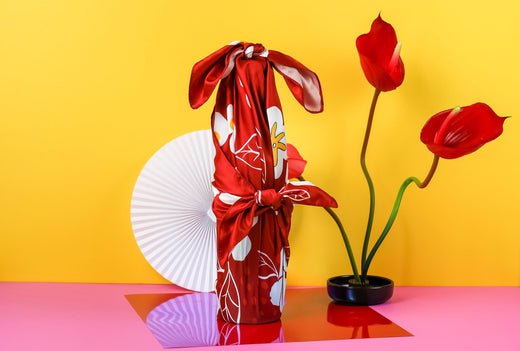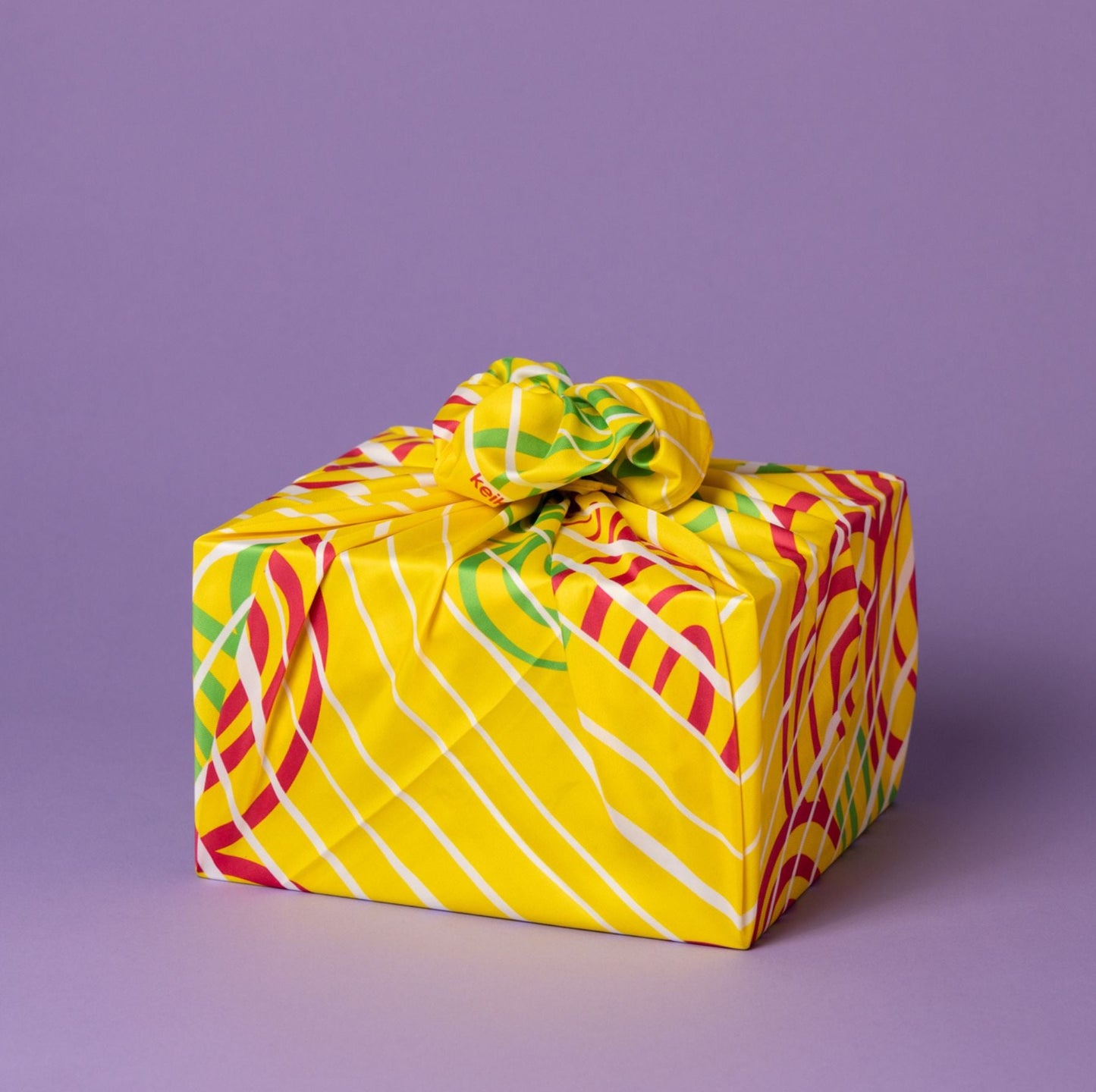
What Kind of Fabric is Best for Furoshiki? A Guide to Eco-Friendly Materials
Furoshiki, the art of Japanese fabric wrapping, has a rich history dating back to the Nara and Edo periods. Starting as a practical way to carry your clothes to the bath houses, or onsen, in Japan, it also became the de-facto way to wrap gifts in Japan. Over time, it has become not only an every day item in Japanese homes but also an artistic way to elevate gift wrapping. There are many fabrics that are suitable for a furoshiki. Let's dive into how to choose the right fabric for your reusable gift wrap.

What were furoshiki made from in Japan?
Furoshiki started out as a way to organize and carry your clothes to and from the bathhouses. In fact, that's where it gets its name. Because of this very practical use, common, affordable, and durable fibres like cotton and linen were used. This was especially true for the average working class person. These fabrics could be easily sourced, cut to size, cleaned, and repaired, making them a convenient choice. Traditional cotton furoshiki were often dyed with natural indigo, creating beautiful, deep blues that symbolized longevity and protection.
As furoshiki were also a way to carry prized items to be gifted, the fabric became a way to signal importance, reverence, and meaning. Furoshiki used in official palaces and high-ranking homes were often made from silk, reflecting the luxurious tastes of each era. Silk was prized for its strength, smoothness, and vibrant colors, making it ideal for wrapping and carrying precious items. The intricate patterns and motifs woven into silk fabrics added an extra layer of beauty to furoshiki.
What makes a good furoshiki fabric?
A good furoshiki fabric today combines several key characteristics. Firstly, durability is essential to ensure that the fabric can withstand repeated use without fraying or tearing. This is particularly important for furoshiki, which is meant to be a reusable and versatile wrapping material. Secondly, opacity ensures that the contents remain hidden when wrapped, adding an element of surprise and anticipation. A subtle shine, whether from silk or a synthetic blend, adds a touch of elegance to the wrapped item. Finally, pliability is crucial for easy folding, knotting, and draping, allowing users to create various wrapping styles with ease.
Furoshiki is often compared to Korean pojagi, a similar wrapping cloth tradition. While traditional furoshiki fabrics are opaque and durable, pojagi is known for using more diaphanous and delicate fabrics and using a quilting technique that blends together many textile scraps to form a new cloth. This diversity allows for greater creativity and customization in pojagi designs.

What size should the furoshiki cloth be?
The size of a furoshiki varies depending on its intended use. Small furoshiki, typically measuring around 45-50 centimeters (18-20 inches) square, are perfect for wrapping gifts, creating stylish bags, or carrying everyday items like lunch boxes or books. Medium-sized furoshiki, ranging from 70-90 centimeters (28-36 inches) square, can be used as scarves, tablecloths, or as wrappings for larger gifts. Large furoshiki, measuring over 100 centimeters (40 inches) square, can transform into picnic blankets, beach towels, or even clothing like skirts or tops when folded creatively.
Using recycled materials for sustainability
We launched Keiko Furoshiki as a beautiful and practical way to curb the waste created by disposable wrapping paper. Because of this mission, we take a proactive approach to environmental responsibility by using recycled polyester for our fabric gift wrapping. Recycled polyester is made from post-consumer plastic bottles, reducing waste and lessening the environmental impact of production. This eco-friendly choice aligns with the brand's mission to create beautiful and functional furoshiki while minimizing their carbon footprint. Additionally, Keiko Furoshiki offers a range designs, catering to different wrapping needs and style preferences.

Repurposing existing fabrics
Beyond traditional and modern fabrics, furoshiki enthusiasts can explore creative options using materials they already have at home. Vintage scarves, whether polyester, silk, or cotton, can be repurposed into unique furoshiki with nostalgic charm.
Tea towels, known for their absorbency and durability, make excellent furoshiki for kitchen items or small gifts. Fabric scraps from sewing projects can be patched together to create patchwork furoshiki, adding a handmade touch to your wrapping style.
DIY furoshiki projects also encourage experimentation with different fabrics and techniques. Upcycling old clothing or linens into furoshiki showcases a commitment to sustainability and creativity. Embellishments like embroidery, appliqué, or fabric painting can personalize furoshiki for special occasions or themed gifts.

Furoshiki fabrics encompass a blend of tradition, sustainability, and creativity. From historical silks and cottons to modern recycled polyester and DIY creations, each fabric choice contributes to the artistry and functionality of furoshiki wrapping.
Whether using traditional materials, supporting sustainable brands like Keiko Furoshiki, or repurposing items at home, furoshiki invites us to rethink how we wrap and carry objects with style, purpose, and a touch of eco-consciousness.























